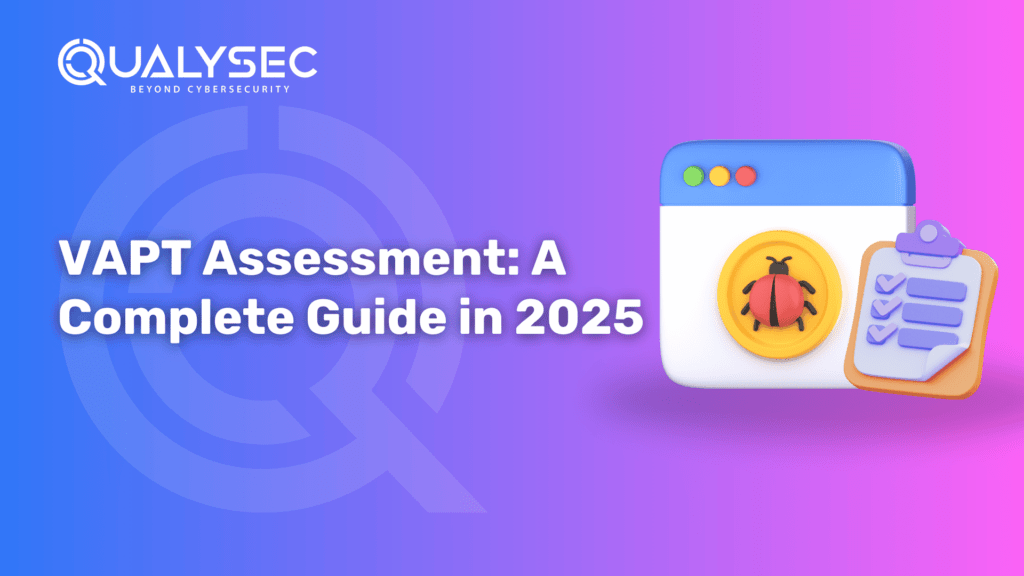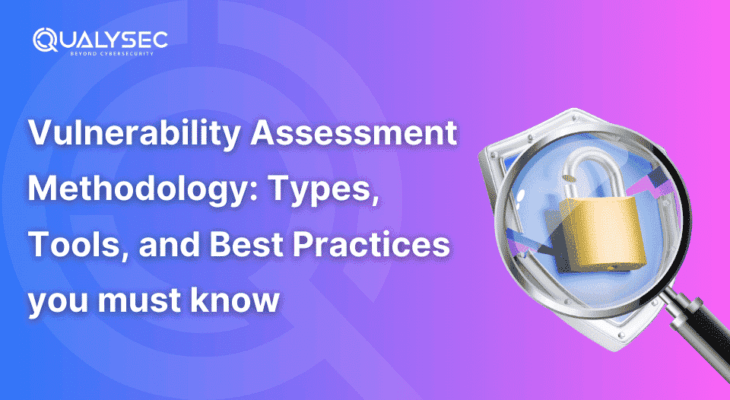VAPT Assessment: A Complete Guide in 2025
With more sophisticated cyber crimes than ever before, organizations have to become a truly proactive defensive platform for cybersecurity. Vulnerability Assessment and Penetration Testing (VAPT) is one of the most effective methods to secure one’s digital assets. So, this process identifies the loopholes in terms of security and gives us an insight into what to do about them to reduce the risks further. With cybercriminals constantly changing their strategy in attacks, the VAPT assessment implemented in business in 2025 helped businesses to be ahead of any potential threat. Today, Qualysec Technologies is going to explain what VAPT is, how it is important, what are methodologies, tools, and best practices, and how Qualysec Technologies can enhance the security of your organization. What is a VAPT Assessment? VAPT assessment is the name of the cybersecurity evaluation process for organizations to find and eliminate weaknesses related to security in their IT environment. Organizations need VAPT to improve their security posture, audit and comply with certain external requirements (ISO 27001, PCI DSS, GDPR), and mitigate any sensitive data compromise. Businesses across industries, including finance, healthcare, and e-commerce, use VAPT to protect themselves from financial loss and reputational damage caused by security breaches. It includes two key components. Importance of VAPT in 2025 With the progress of cyber threats, it comes to pass that an increased organization should embrace a proactive approach to security. Vulnerability Assessment and Penetration Testing (VAPT) helps in detecting security vulnerabilities before they become easy prey to these malicious actors. The reliance on digital systems and the growing importance of compliance have added importance to VAPT assessment, which gained its recognition in 2025. Rising Cyber Threats Cybercriminals are targeting businesses using advanced techniques such as AI-driven attacks, ransomware, phishing, and zero-day exploits. By 2025, organizations will face significantly more risks from: Regulatory Compliance Requirements Governments and industry regulators mandate VAPT for many sectors by enforcing strict cybersecurity laws. GDPR, PCI DSS, ISO 27001, HIPAA, and NIST are guidelines that businesses need to comply with. Otherwise, authorities will fine them and impose legal consequences. Failure to perform a VAPT assessment by 2025 can result to: Businesses meet compliance requirements and maintain good trust with stakeholders through regular VAPT assessments. Protection Against Financial Losses A cyberattack can be so successful in wiping out valuable data, spending significant cash on rebuilding and legal fees, not to mention financial damage to online reputation. Security investments like VAPT become necessary because the global cost of cybercrime will be 10.5 trillion a year by the year 2025. VAPT benefits in the financial protection include: Enhancing Customer Trust and Business Continuity Consumers are more aware of the risk of cybersecurity today than they ever have been. Customer trust and brand reputation are affected due to data breaches. VAPT makes sure that businesses have a secure environment, which in turn gives customers confidence about their data privacy. “Related content: Read our guide to the Difference between VA and PT“ The VAPT Process 1. Scoping and Planning Before conducting a VAPT assessment, you must define the scope and objectives of the test. This includes: A well-defined scope prevents disruptions to business operations and focuses the assessment on high-risk areas. 2. Vulnerability Assessment During this phase, you get to the security weaknesses of the system using automated tools as well as manual techniques. The key activities include: Security gaps that need to be imposed before penetration testing are presented in the vulnerability assessment. “Explore: Top Vulnerability Assessment Methodology“ 3. Penetration Testing This phase involves security professionals making real-world plays against discovered vulnerabilities to determine what they can do. The penetration testing process includes: Active exploitation of vulnerabilities allows penetration testers to see critical insights into how attackers may invoke real-world attack scenarios. “Explore: Top Penetration Testing Methodologies“ 4. Risk Analysis and Reporting When done with the VAPT assessment, the findings are elaborated into a complete report. The report typically includes: The security team and management need to take corrective actions toward their security posture by reviewing this report. Latest Penetration Testing Report Download 5. Remediation and Re-Testing Once vulnerabilities are found, the organization has to work on remediation, that is: Patching software and fixing misconfigurations. Strengthening security controls, as such, by the use of multi-factor authentication (MFA). Improving how security is defined and using the employee education that was left behind from the breach to prevent such from happening again in the future. The re-test after follow-up is done to ensure that all the vulnerabilities are accounted for and the system is secure. Key VAPT Methodologies Black-Box Testing Black box testing mimics an attack by an external hacker with no knowledge of the target system’s internal architecture, code, or credentials. Reconnaissance techniques, for example, are used by the tester the way a real-world attacker would deal with it – interacting with the system, gathering information, and exploiting potential weaknesses. Role – Evaluate an organization’s ability to protect External Security Defenses against unauthorized access. Pros – Gives realistic simulation of attack. Also, it identifies external vulnerabilities. White-Box Testing White box testing also known as transparent box or clear box testing gives the tester complete access to the internal structure, source code as well as system architecture. It can be used for thorough security analysis such as the checking of insecure coding practices, logic flaws, configurations, etc. Role – Very useful to measure security at the development stage to avoid vulnerabilities before deployment. Pros – Provides a thorough code security analysis. Grey-Box Testing The hybrid Grey Box approach includes software in which the tester has limited knowledge about credentials or limited access to documentation. This is a method of attack by the insider or hacker who has managed to breach part of the network. Role – Testing security posture with inside attackers or even attackers with some system access. Pros – Balances efficiency and realism, focuses on high-impact vulnerabilities. Network Penetration Testing It is a methodology that qualifies security weaknesses existing in the network infrastructure of an organization, which is composed





